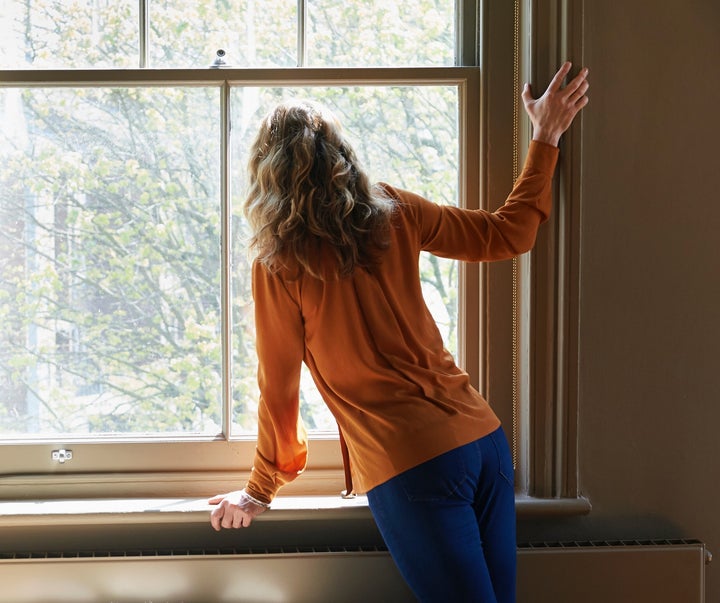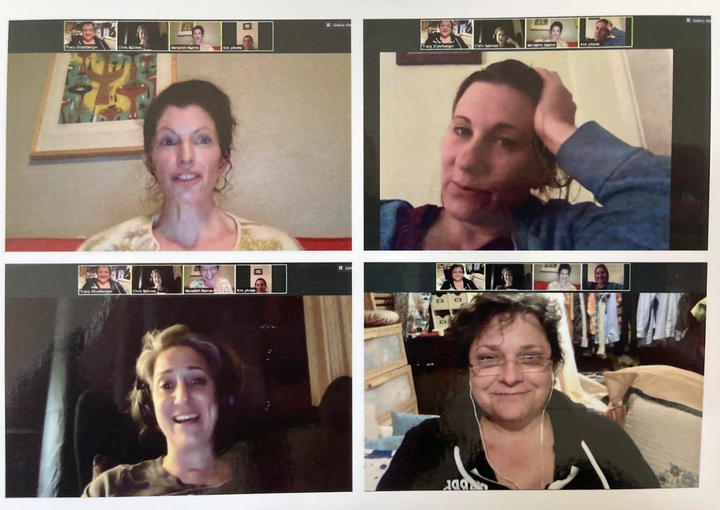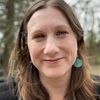
During the height of the pandemic, I went to a live concert with my husband. It was the first concert I had been to in over six years. We sat on our couch, a beer in his hand and a bowl of ice cream in mine, as the band’s music blasted through our smart TV. I lowered the thumping of the bass with the remote. I looked away when the pulsing lights flashed over the stage. There were no moving crowds to make me feel dizzy. My limited energy supply wasn’t drained by a commute to and from the venue. We were alone, but I still felt connected to something more universal ― a thread that bound me to others.
This is what the pandemic gifted me.
I realize this is not an ideal format to experience a live concert, but for me, it is the closest I can get, having joined the ranks of the invisibly disabled during my 40th year.
One cold night, my right heel slipped on black ice and I was flipped into the air, my head landing on the crumbling concrete of our driveway. I was diagnosed with a concussion and told I would be better within two to three weeks. Fast forward six years, and I’m still dealing with the persistent symptoms of post-concussive syndrome.
What this means is that my brain can’t process bright lights or multiple layers of noise. It means that my head spins when riding in a car or walking on a busy street. It means that I am unable to concentrate on a task for longer than an hour. Really, what this means is that I can barely leave my home without tailspinning into dizziness and migraines and neuro-fatigue that can last anywhere from hours to days.
By the time COVID-19 had forced us all to shelter in place, I had already been living within the walls of my home for four years. But the pandemic made me feel like I was no longer stuck in my house; instead, I was wrapped within a collective grief. And I hate to confess this — knowing the suffering and loss this virus has caused for so many people — but my world opened when everyone else’s shut down.
“More types of activities than ever imagined — cooking courses, church, conferences, yoga classes, support groups — allowed me to meet people within the quiet of my home, without the inevitable migraine or the fast depletion of my energy levels. For the first time in years, my social calendar was packed.”
Telehealth appointments meant I no longer had to struggle with the florescent lights and background music in waiting rooms. For the first time since my accident, thanks to a streamed performance from the St. Louis Ballet, my daughter and I engaged in our previous tradition of seeing “The Nutcracker.” It became the norm to form small “pods” or groups, making social gatherings more accessible. Restaurants moved their tables outside, making noise levels more tolerable. I could easily attend birthday parties because they had been moved online. More types of activities than ever imagined — cooking courses, church, conferences, yoga classes, support groups — allowed me to meet people within the quiet of my home, without the inevitable migraine or the fast depletion of my energy levels. For the first time in years, my social calendar was packed.
Colin Killick, the executive director of the Disability Policy Consortium, has said, “People with disabilities found that accommodations they were denied for decades suddenly became universally available during the pandemic.” I can only speak to living with my kind of invisible disability, but these adaptations have been life-altering, providing a sense of belonging when for so many years I felt nothing but isolation and abandonment.
And there are so many of us. About 10% to 20% of concussed individuals will have symptoms that leave them suffering for months to years ― perhaps forever. More broadly, it has been estimated that up to 10% of Americans have a disability that is not easily detectable, many neurological in nature, like mine. Think: migraine, myalgic encephalomyelitis (chronic fatigue syndrome), multiple sclerosis, epilepsy, fibromyalgia. Symptoms vary from person to person, but these neurological conditions often cause debilitating pain, headaches, fatigue, dizziness and cognitive impairments, to name a few.
Let’s also not forget the newest group to join the invisibly disabled: those with long COVID. The American Academy of Physical Medicine and Rehabilitation notes that 10% to 30% of Americans who had COVID may have long COVID, with many suffering from invisible symptoms like “brain fog,” fatigue, and muscle and joint pain. Many have and will become stuck at home, unable to work — and, like many of us, find themselves cut off from the world.

I know that the privileged population who had the luxury of being able to stay home (like me) or work from behind a computer are tired of blue light-emitting screens, Zoom-ed out, ready to eat in restaurants and get on with their lives. People are returning to work, buying tickets to social events, laughing at parties. But as the world returns to normal, I flash back to the first year after my concussion, when I lived in almost total seclusion within the dark walls of my bedroom.
With shaken neurochemicals and existing only in isolation, my mind and health deteriorated. It has been reported that social isolation and loneliness are so dangerous that they have similar health effects to smoking 15 cigarettes per day. But the impacts go even further. After almost a year of separation, I got to the point where I no longer felt alive, my brain a gelatinous blob in a body that could still beat its heart. My thoughts became ravaged with suicidal ideation while I stared at the ceiling.
I am not alone in this. According to a commentary published in the Journal of Health Science & Education, “rates of suicidal ideation, attempts, and completion are alarmingly high in chronic invisible illness communities.” Risk factors for suicide, such as sense of isolation, hopelessness, job loss, and loss of relationships, are widespread for those living with hidden disabilities. Twenty percent of people with myalgic encephalomyelitis die by suicide. For people diagnosed with fibromyalgia, 33% report suicidal ideation, and “1,200 chronic Lyme disease patients die by suicide in the United States annually.”
A meta-analysis completed at Harvard found that concussion increased the risk of suicide twofold. Similarly, a group of Canadian researchers found that the suicide rate was three times the population norm for those with concussions, with 5.7 years being the mean time between a mild concussion and suicide. And for those suffering with long COVID, commentary in QJM has already raised red flags, noting that “inflammatory damage to the brain in individuals with post-COVID syndrome increase suicidal ideation and behavior in this patient population.”
Most of us have now experienced first-hand the impacts of sheltering in place and lockdowns and the effects it has on our mental health. Like most of the population, I do not want to go back to these lockdowns. But the pandemic has shown us that more is possible, that we have the capabilities to adapt and bring ourselves together in new and innovative ways.
For myself, I do not want to lose this. It’s critical to consider the vast populace who want to participate and contribute to our society but can’t due to something outside their control. After all, most of us will weave in and out of disability throughout our lifetimes, whether from an injury or an illness or the inescapable process of aging.
“The pandemic has shown us that more is possible, that we have the capabilities to adapt and bring ourselves together in new and innovative ways.”
In the long run, keeping the pandemic’s accommodations in place will benefit all of us. They mean getting an online appointment with a veterinarian when Cujo keeps ripping apart shoes but you can’t make it to the clinic. They mean joining a school board meeting remotely when work goes late. Maybe they can bring about the end of waiting in lines. I can’t help but think of Ed Roberts, who pioneered curb cuts — also known as the dropped curb — to assist wheelchair users, only to discover that it benefitted others as well, like people pushing strollers or riding bicycles or those with a cane.
At the very least, keeping the accommodations we adopted during the pandemic will require that choices continue to exist with the aid of technology. I need my daughter’s piano lessons to still be conducted online because it is hard for me to drive there. I want live events to be streamed for those who can’t attend in person. I want health insurance to continue to cover telehealth appointments. I want remote work to still be available for those who need it. And I want us to think bigger, like having public areas such as airports and conference venues to include quiet and low-light places to rest. I want us to universally adopt a system like the sunflower lanyards in the U.K. or the National Disability ID in the United States, which allow people to discreetly signify that they may need support due to an invisible condition.
The unfortunate consequence of having an invisible disability is that we often become invisible. COVID-19 has brought options that I never thought would be possible. The pandemic didn’t bring my former life back, but it has curtailed my loneliness and allowed me to belong again. And society benefits when the millions of people with invisible disabilities have a seat at the table.
The livestreamed concert my husband and I watched eventually ended, the band gave its final encore, the stage lights went out. Most concerts are now for those who can attend in-person, but like many in the invisibly disabled community, I need the stage lights to stay on at home too.
Kristin Moran is an educator, writer, and concussion-advocate living in Portland, Oregon. You can find her work in Entropy Magazine, The Mighty, Getting Smart, Scholastic Administrator, and on the Faces of TBI podcast. She is currently working on a book about concussion recovery and lives with her husband, daughter, and a slew of rescue pets. Follow her on Instagram at @braininjurywarriors.
If you or someone you know needs help, call 1-800-273-8255 for the National Suicide Prevention Lifeline. You can also text HOME to 741-741 for free, 24-hour support from the Crisis Text Line. Outside of the U.S., please visit the International Association for Suicide Prevention for a database of resources.
